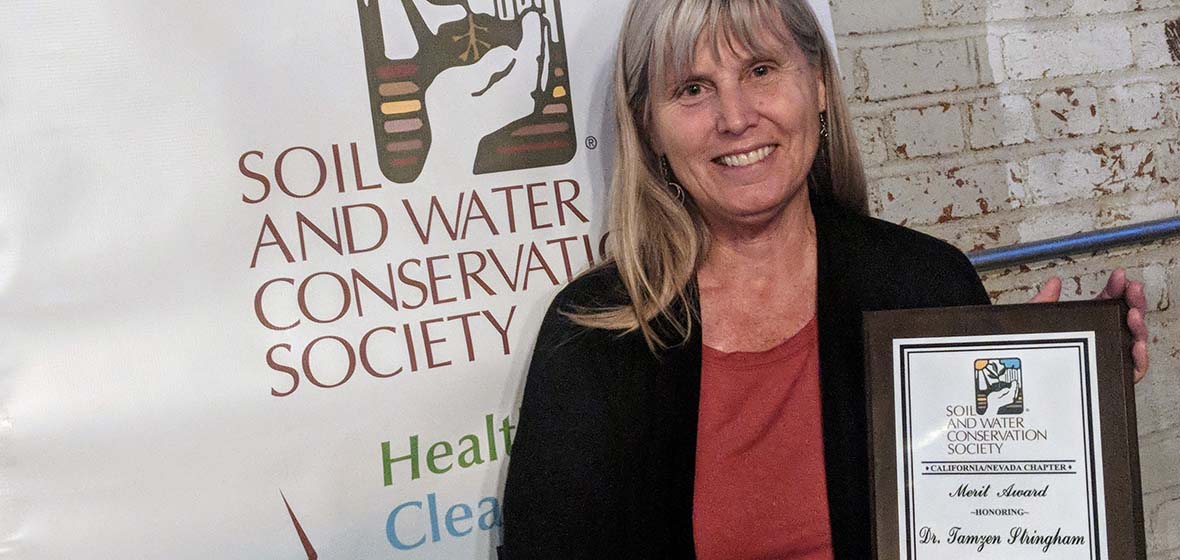University of Nevada, Reno Rangeland Ecology Professor Tamzen Stringham was recently recognized for her contributions to rangeland science and management, when she received the California-Nevada Chapter Soil and Water Conservation Society's 2019 Merit Award at the group's Annual Conference. The award recognizes outstanding efforts or activities promoting the conservation and development of natural resources in California and/ or Nevada.
One of Stringham's most influential projects is her development of state-and-transition models, which describe how rangelands respond to both natural and human-caused disturbances, and how the land will respond to different recovery efforts. She has created these models for over 40 million acres of Nevada and has contracted with the Nevada Bureau of Land Management to help map the entire state. The maps help determine the potential of the land for different uses.
"Tamzen has a pretty strong tie to land manager needs, and she develops products driven by what those needs are," said John McCann, forest hydrologist for the Humboldt-Toiyabe National Forest, who nominated Stringham.
Stringham is also working on the development of spatial tools that will allow land managers to create their own state-and-transition model maps and ecological condition maps of large areas. The tools she has developed are used by several state and federal organizations to see how land responds to management decisions, such as management and rehabilitation of grazing land and wildlife habitat, including critical habitat for sage grouse.
"Her influence and knowledge have been felt by many land management organizations," said McCann. "Because of the tools she has made, organizations are collecting better information and making better land management decisions."
Stringham joined the University's College of Agriculture, Biotechnology & Natural Resources 11 years ago, and her work includes research done as part of the College's Nevada Agricultural Experiment Station.












